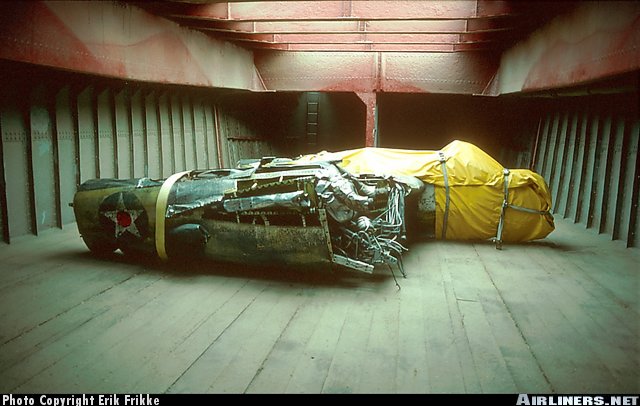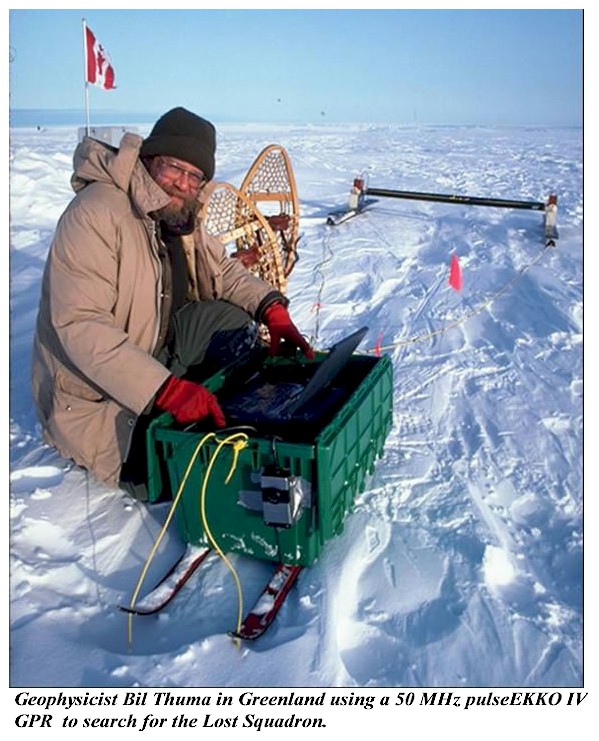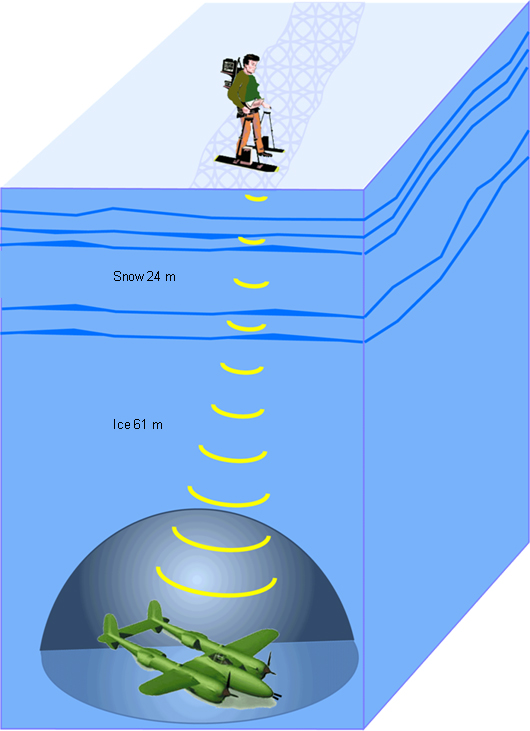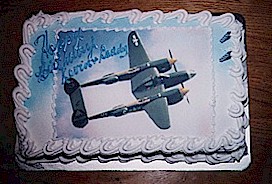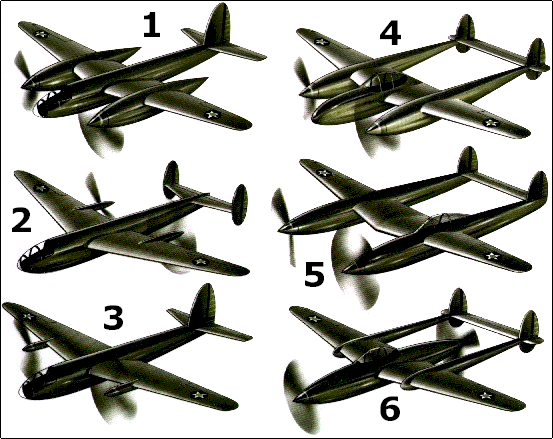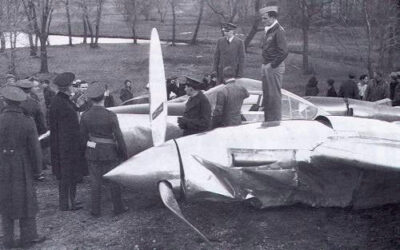The Expedition Begins
On July 15, 1992, fifty years to the day later, 74-year-old Brad McManus stood on the ice cap surrounded by the recovered pieces of his late friend Harry Smith’s P-38, and was flooded with memories of his wartime experience and the lifetime friendships that he held dear to his heart.
A new mission was about to begin… The Greenland Expedition, for which Bob Cardin was the Project Manager and the one that was successful in recovering one of the planes (the P‑38 which would come to be known as “Glacier Girl”), was actually the 13th expedition to go looking for the Lost Squadron, beginning in 1983.
A combination of historic photos, understanding of ice movement and subsurface sensing systems such as GPR and magnetometry led to success. Over the course of a decade and after several expeditions, technological advances helped pin-point the Lost Squadron’s location.
During that period, more advanced GPR systems appeared, and when combined with the advent of GPS, enabled reliable and repeatable subsurface imaging. (Thanks to sensoft.ca for this info. More technical details here.)
This is a portion of the picture the expedition members used to determine which of the P‑38s they would try to recover. You can see from the photo that the props are intact. When Smith landed her, he feathered the props which (50 years later) enabled the crew to recover the engines and all of the propeller blades except one. Good job, Harry!
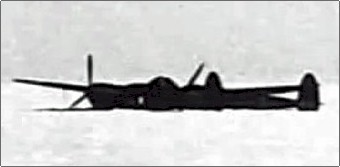
Getting to the Plane
Next on the checklist? Getting the plane to the surface. How do you get a P38 out of the ice? Simple…melt the ice!

Well, maybe not as simple as that, seeing how it was 268 feet of ice. Basically, you start with a six-digit budget, followed by transporting tons of equipment that include arctic survival gear and heavy construction machinery, and top it all off with adventure-minded individuals willing to take the hardships and risks associated with one-of-a-kind expeditions to a hostile environment. That’s what it took to recover a P‑38 from “The Lost Squadron.”
The contraption designed to burrow through the ice looks like a technologically advanced spinning top. It’s called the Super Gopher — a thermal meltdown generator — and melts the ice by circulating hot water from a collector and pumping it through copper tubing coiled around the outside. The four-foot-wide device is suspended over the area to be tunneled through by a hoist and chain, being lowered at a rate of about two feet per hour. The water created is pumped out through a hose coupled to a submersible pump.
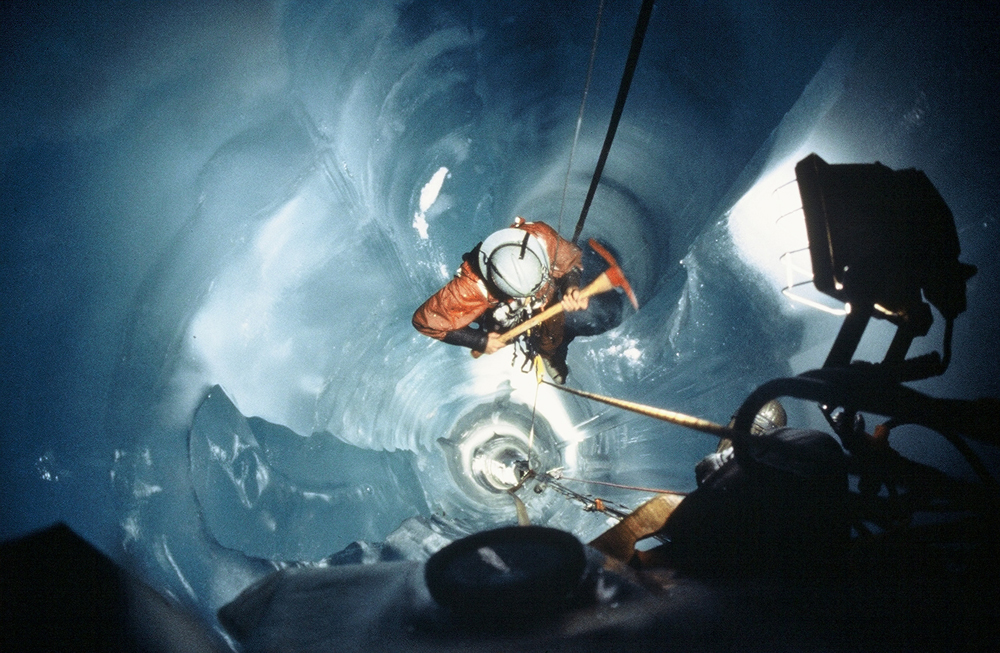
When the Gopher completed melting its 268-foot-deep shaft it was winched out of the hole and set aside. The hole took the better part of a month to complete. The descent to the bottom of the ice hole took twenty-five minutes. Men equipped with steam hoses were lowered in to carve out a cave surrounding the aircraft. Water created from this was constantly pumped out, as workers had to slog through ice water to keep the project moving along.
Salvaging the P‑38 from the glacier took long hours of hard work, all of which had to be performed in cramped surroundings in a rain of melting water and chunks of ice that periodically fell from the cavern roof. There were several tense moments when the striking of a chisel sent cracks like bolts of lightning running through the roof of the ice cavern.
Once the cavern was completed, the task of disassembling the plane lay ahead…
Bringing Glacier Girl to the Surface
Technicians began to take the P‑38 apart piece by piece. Propellers had to be removed, the wings had to be disconnected, the fuselage disassembled; every part of the plane was scrutinized, logged and recorded and then hoisted to the surface.
The last section of the aircraft, the center section, was seventeen feet by twenty-one feet and weighed seven-thousand pounds. It, too, had to travel the 268 feet to the surface. Attached to the plane were cables that ran up to several winches. The bulk of the lifting was done by one very powerful manually operated hoist. Using it required applying great pressure uniformly, and it turned out that only one member of the team had the necessary strength for the job. The crank required four turns for every quarter-inch rise.
We just want you to get a picture of how challenging this project was. Manually-operated hoist, 7,000 pounds, one guy, four cranks to raise it 1/4 inch, 268 feet. Yeah. Think about it.

Several people on the surface were needed to monitor the various other winches, and someone had to ride on the plane section to make sure it came up evenly and avoid any obstacles in the shaft. The raising of this section took almost two full days.
After reaching the surface, the crew had to be extremely careful removing the section from the hoist, as a mishap at this point would send the huge section plunging down the shaft. Due to the limited height of the hoisting frame, the crew had to dig away a ramp on one side of the shaft onto which the plane could be pulled and released. Once done and out of the hole, a bottle of champagne was opened and signed by the remaining team members and dropped down the shaft. The recovery took four months to complete.
Bringing Glacier Girl Home
Arrangements were made to take their cargo back to the states. A Sikorsky S‑51, a heavy-duty cargo copter, was employed to carry the center section to a sea port where two weeks later the section was loaded onto a Danish ship that carried it to Denmark, and eventually to the docks at Savannah, Georgia. From there it was delivered to project funder Roy Shoffner’s hangar in Middlesboro, Kentucky, where the restoration began.
